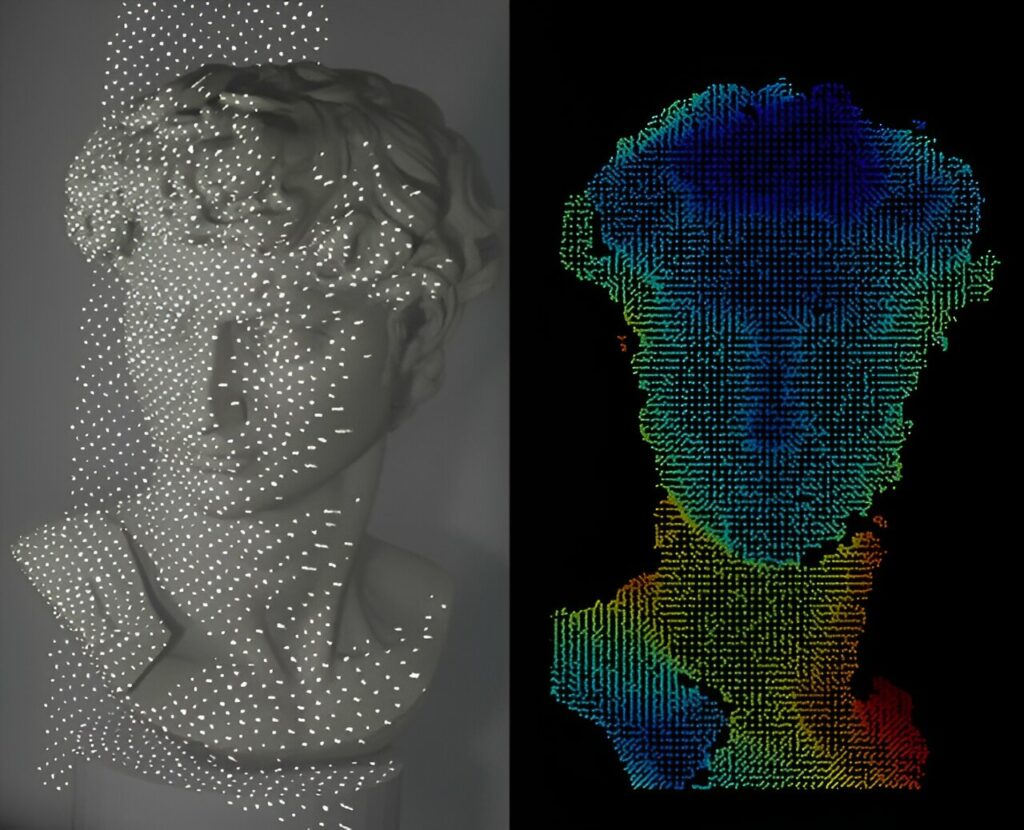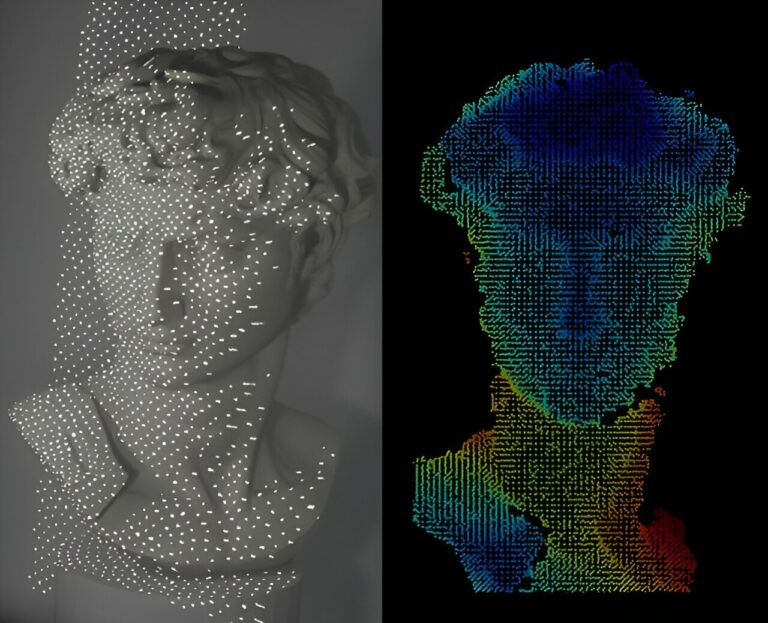Testing a more streamlined facial recognition technology on Michelangelo’s David.
Facial recognition systems have become increasingly popular, especially in smartphones and other devices that require secure access. However, the current technology used in these systems often involves bulky projectors and lenses. In a recent study published in Nano Letters, researchers have introduced a more streamlined and efficient 3D surface imaging system with simplified optics.
Traditionally, 3D surface imaging systems used in facial recognition rely on dot projectors that consist of various components such as lasers, lenses, light guides, and diffractive optical elements (DOEs). These DOEs are special lenses that break the laser beam into thousands of infrared dots, which are then projected onto the face or object being scanned. The device’s camera reads the pattern created by these dots to confirm the identity.
However, these dot projector systems are relatively large and consume a significant amount of energy, making them less suitable for small devices like smartphones. To address this issue, a team of researchers developed a more compact facial recognition system that is nearly flat and requires less power to operate.

Instead of using a traditional dot projector, the researchers replaced it with a low-power laser and a flat gallium arsenide surface. This modification significantly reduced the size and power consumption of the imaging device. The top of the metallic surface was etched with a nanopillar pattern, creating a metasurface that scatters light as it passes through the material.
In this new prototype, the low-powered laser scatters into 45,700 infrared dots, which are then projected onto the face or object in front of the light source. Similar to the dot projector system, a camera is used to capture and analyze the patterns created by these infrared dots.
The researchers conducted proof-of-concept demonstrations and found that the new system performed just as well as existing smartphone facial recognition systems. This advancement in 3D surface imaging technology has the potential to revolutionize not only facial recognition but also other fields such as computer vision and autonomous driving.
Overall, this sleeker and more efficient 3D surface imaging system represents a significant step forward in the development of facial recognition technology. With its compact design and reduced power consumption, it holds promise for future applications in various industries.
During the prototype testing, the system successfully recognized a 3D replica of Michelangelo’s David by comparing the infrared dot patterns with online images of the renowned statue. It is worth mentioning that this achievement was accomplished with significantly less power consumption, ranging from five to 10 times less, on a platform that is approximately 230 times smaller than a typical dot-projector system. The researchers emphasize that their prototype serves as a compelling example of how metasurfaces can offer efficient imaging solutions for facial recognition, robotics, and extended reality applications, particularly in small-scale and low-power scenarios.
This article is republished from PhysORG under a Creative Commons license. Read the original article.
Do not forget to share your opinion with us to provide you with the best posts !





0 Comments